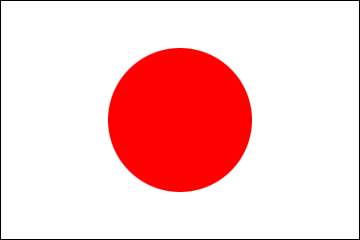令和3年度日本ブランド発信事業「堺の刃物」ウェビナーの開催
令和4年3月10日
3月10日,日本大使館は,フランス人のエリック・シュバリエ鍛冶職人を講師に迎え,同氏の師匠である平川康弘22代鍛冶職人による実演を交えたウェビナー「日本のクラフトマンシップ:堺の刃物」を開催しました。
冒頭,川村泰久大使より,日本の刃物は,その個性的なデザインや高い質と鋭い切れ味で世界に広く知られているが,右は長年の鍛冶職人による技術研鑽の賜である,日本の刃物は料理人のみならず,生け花や盆栽等の様々な分野で使用されている旨述べました。
シュバリエ鍛冶職人は,堺市に拠点を置いており,2012年に日本刃物や台所用品を扱う独自ブランド「DeSakai」を立ち上げています。また,同鍛冶職人は,堺市インバウンド・コーディネーターとして,堺ブランドの海外市場への展開支援を行っています。ウェビナーの中で,シュバリエ鍛冶職人は,出刃包丁や菜切包丁等,様々な種類の刃物の違いについて紹介するとともに,堺市周辺における鍛冶の発展の歴史についても説明を行いました。
シュバリエ鍛冶職人は,平川22代鍛冶職人による佐助工房での実演を紹介しつつ,特定の木材チップを使用することで超高温の火力を得られ,右が一定の効果発現を可能にする旨説明しました。また,頑丈な形状を得るために,刃が鉄とカーボンの層構造となっている旨説明しました。
ウェビナー最後の質疑応答では,多くの参加者より日本刃物に使われる伝統的な技術等について活発に質問が行われました。
(イベントの様子は以下リンクからご覧になれます)
Webinar "Craftsmanship of Japan: Sakai Forged Knives" | Facebook
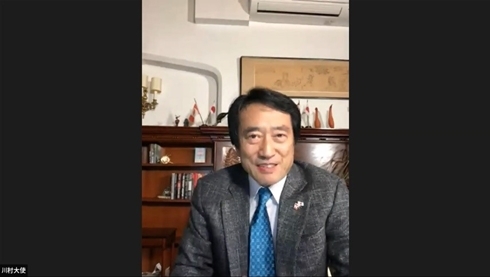 |
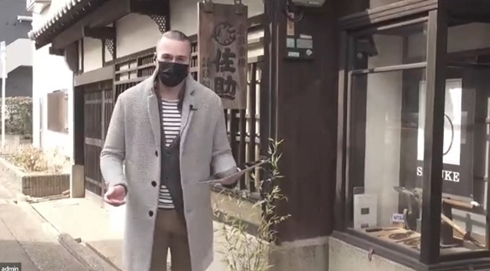 |
| 冒頭挨拶を行う川村大使 |
佐助工房を紹介するシュバリエ鍛冶職人 |
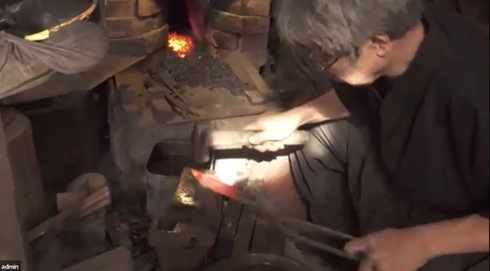 |
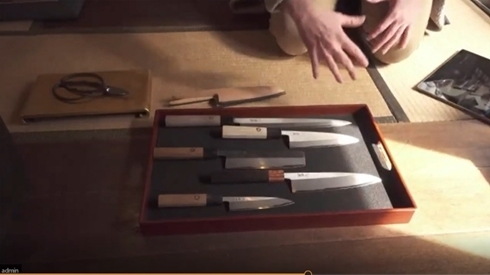 |
| 平川22代鍛冶職人による実演 |
シュバリエ鍛冶職人による様々な刃物と鋏の紹介 |
 |
|
| 質疑応答の様子 | |
(参考)質疑応答(シュバリエ鍛冶職人による事後の回答含む(原文掲載))
| 1 | What is the sharpening method for these knives? | ||||
| Thank you for your question. Materials used to make traditional blades are soft steel (low carbon, similar to iron for the knife body) and hard steel (high carbon steel for the edge). The sharpening method for these traditional carbon steel knives is the sharpening with wet stone. Until 6000 grind can be higher grind if reach mirror polishing. |
|||||
| 2 | Does Sasuke-san do all sharpening in house? or does some other sharpener sharpens like other Sakai blackstmiths? | ||||
| Thank you for your question. Sakai making process is usually separated between 4 craftsmen: The blacksmith, the sharpener, the handle maker and the seller. For scissors, Sasuke does all steps himself, but for knives he used to be just blacksmith. However, because his son finished an apprenticeship as sharpener, from last year, Sasuke does all steps in his shop, same for handle. |
|||||
| 3 | Do you think someday machines or new technology will be able to make this kind of traditional Japanese knife? | ||||
| Thank you for your question. Nowadays, we can make wonderful and good blades using machine so I think it can be possible a day but not yet. Plus, when you buy a knife, you buy also a story. Handmade knives like you can find at Sasuke or on DeSakai website have a soul. A passionate craftsman in an old traditional house putting his heart into the metal and suffering during the hot and humid Japanese summer or the really cold winter. If I am sure machine will be able to make similar knives a day, the story will be too boring. I think people want to get special tools made in few pieces and not industrial mass produced. |
|||||
| 4 | Where to buy these blades in Toronto Canada and how to keep them sharp and where to get them sharpened when necessary? | ||||
| Thank you for your question. Unfortunately Sasuke and DeSakai knives are unavailable in Canada because we make only few pieces. But you can purchase it on the website DeSakai or make an order to Sasuke on his page. To get them sharpened the best way is to get wet stones. I recommend 1000 and 4000 grind to get a good shape, but you can also ask to a Japanese specialist shop in Canada, they usually know how to sharp but be sure they use wet stone before. |
|||||
| 5 | Are these knives a “softer” or “harder” material? | ||||
| Japanese knives are harder material. But the most important is the marriage between the soft steel and the hard steel. The harder blade doesn’t mean it’s a good blade because it’s more fragile and hard to sharp. It’s better to have a good compromise like traditional handmade knives with both material not melt as some cheap knives but forged. |
|||||
| 6 | Is this one for Ikebana? | ||||
| Thank you for your question. Sasuke makes many types of scissors (15 types in many different sizes) But there is the main type: |
|||||
For gardening  |
For flowers |
For Ikebana |
For Bonsai  |
Shears |
|
| 7 | Does Sasuke-san make the handles of the knives himself too and what is the most expensive wood used for this purpose? | ||||
| Thank you for your question. Usual traditional magnolia wood handle with buffalo horn bolster are made by a famous handle maker in Sakai but for expensive piece, Sasuke’s son makes it himself. The most expensive at Sasuke is surely the ebony handle and Japanese quince wood. All with ebony or buffalo horn bolster. |
|||||
